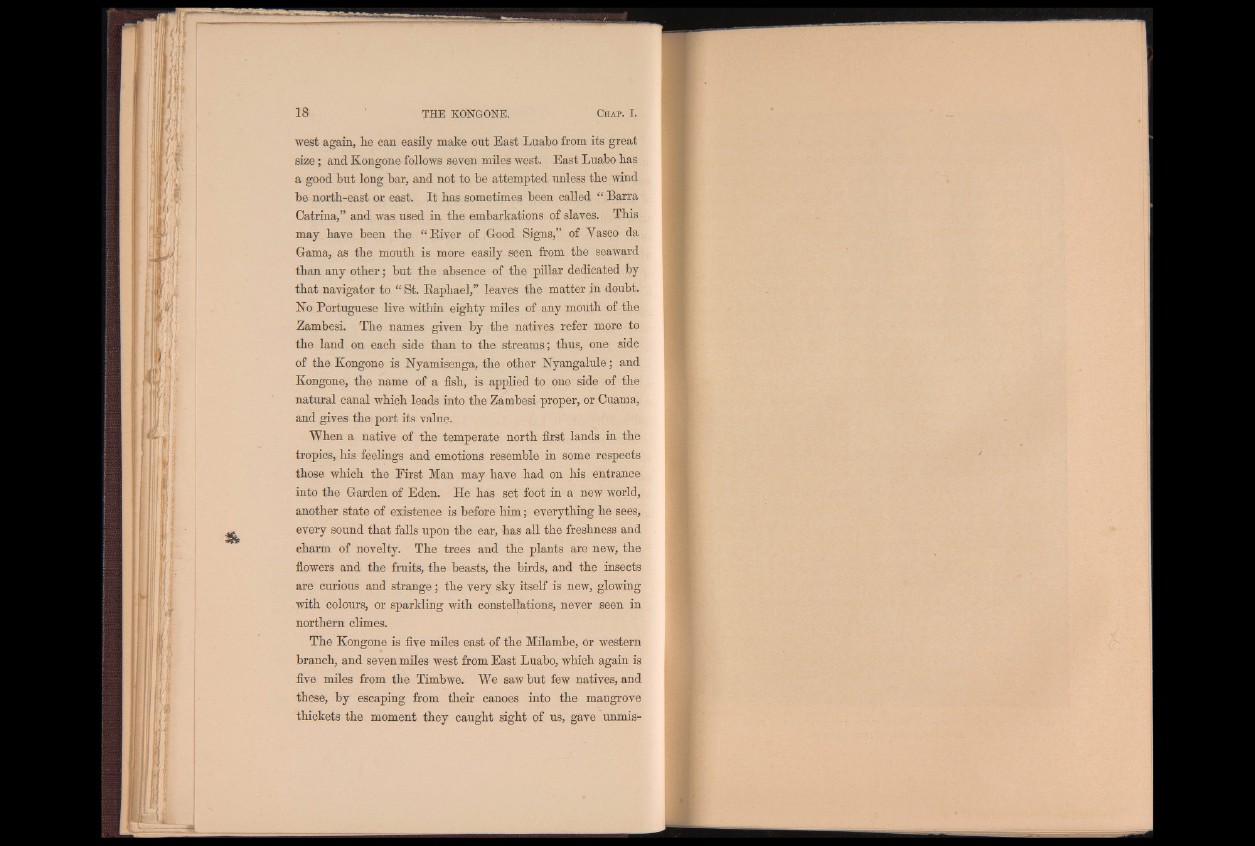
west again, lie can easily make out East Luabo from its great
size; and Kongone follows seven miles west. East Luabo bas
a good but long bar, and not to be attempted unless tbe wind
be north-east or east. I t has sometimes been called “ Barra
Catrina,” and was used in the embarkations of slaves. This
may have been the “ River of Good Signs,” of Yasco da
Gama, as the mouth is more easily seen from the seaward
than any other; but the absence of the pillar dedicated by
that navigator to “ St. Raphael,” leaves the matter in doubt.
Ho Portuguese live within eighty miles of any mouth of the
Zambesi. The names given by the natives refer more to
the land on each side than to the streams; thus, one side
of the Kongone is Nyamisenga, the other Nyangalule; and
Kongone, the name of a fish, is applied to one side of the
natural canal which leads into the Zambesi proper, or Ouama,
and gives the port its value.
When a native of the temperate north first lands in the
tropics, his feelings and emotions resemble in some respects
those which the First Man may have had on his entrance
into the Garden of Eden. He has set foot in a new world,
another state of existence is before him; everything he sees,
every sound that falls upon the ear, has all the freshness and
charm of novelty. The trees and the plants are new, the
flowers and the fruits, the beasts, the birds, and the insects
are curious and strange; the very sky itself is new, glowing
with colours, or sparkling with constellations, never seen in
northern climes.
The Kongone is five miles east of the Milambe, or western
branch, and seven miles west from East Luabo, which again is
five miles from the Timbwe. We saw but few natives, and
these, by escaping from their canoes into the mangrove
thickets the moment they caught sight of us, gave unmis